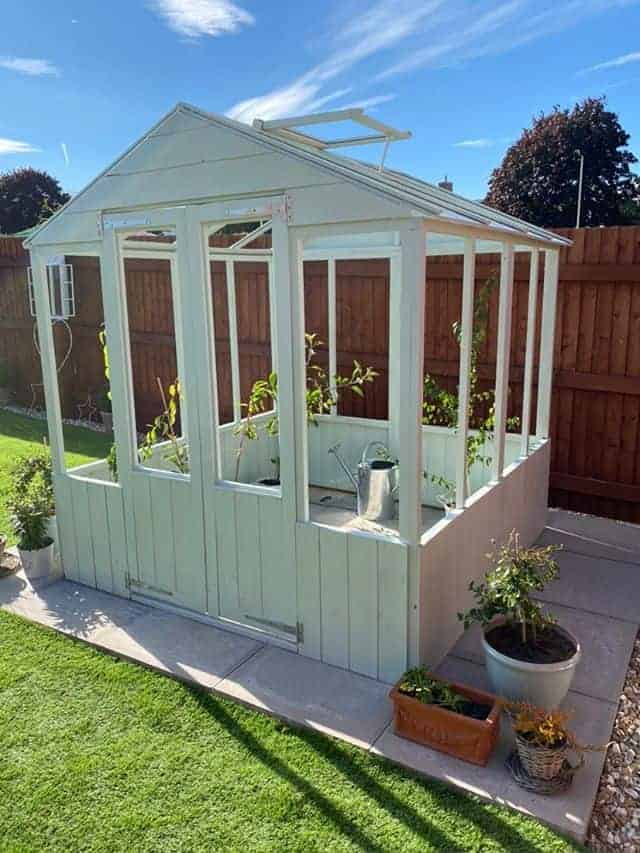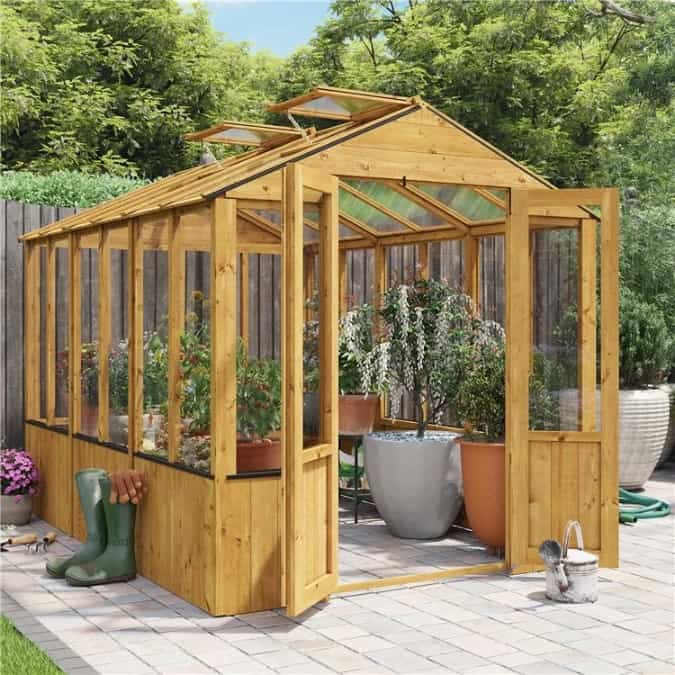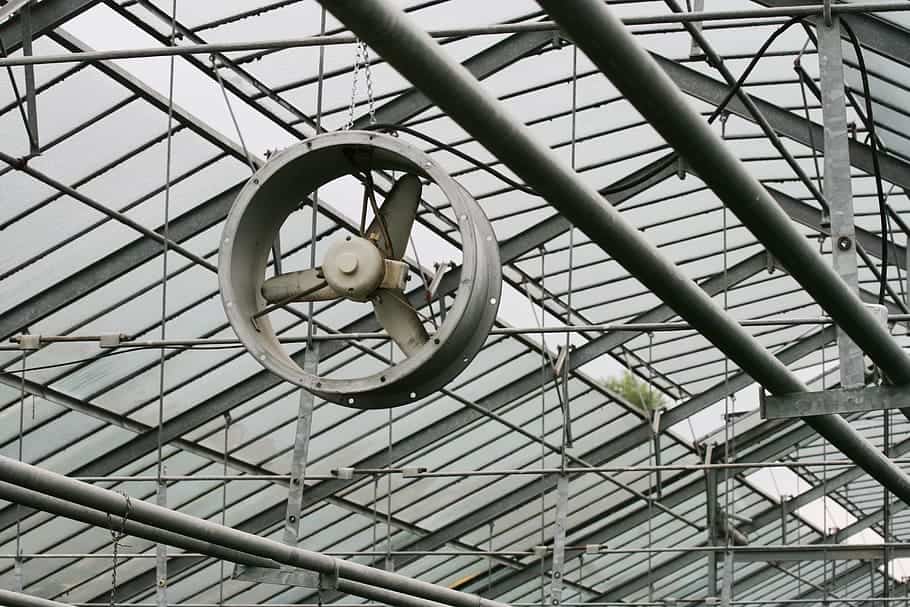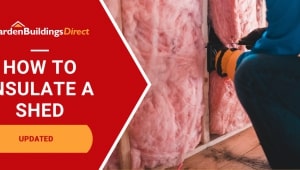Jump to:
Mould, pests, and especially weak growth often start with poor greenhouse ventilation. This guide breaks down your best options for managing indoor air exchange. It also helps to know when your greenhouse needs it most, and we’ll show you the signs. Read on.
Why Greenhouse Ventilation Matters

A greenhouse takes the guesswork out of growing by managing conditions that normally vary outdoors. Inside, the environment is controlled, which makes it easier to grow well. This, however, can go off balance without proper ventilation.
Good air movement keeps temperature, humidity, and fresh circulation in check. Without it, heat and moisture can build up before you know it. That can lead to overheating, dampness, and stale conditions—none of which are good for plants.
Poor ventilation (worse, the lack of it) can also slow down growth or even cause damage. Not to mention, high humidity also creates the perfect setting for mould and disease.
Greenhouse ventilation helps prevent these problems. It’s not just a design feature, but it’s essential for keeping the growing conditions right inside.
Different Ventilation for Greenhouse Methods
There are two types of greenhouse ventilation systems: natural and mechanical.
1. Natural greenhouse ventilation

Natural ventilation doesn’t rely on fans or power—just vents, windows, and outside air. This setup allows warm air to rise and escape through the vents, while cooler air flows in from lower levels. This consistent circulation keeps your greenhouse from getting too hot or stuffy.
Open vents or windows on opposite sides early in the day to create cross-ventilation. For instance, the roof and sides or the front and back (if possible). Keep them partially open, then close before evening if nights are cold.
How does a greenhouse with vents support this?
With vents, you don’t have to rely on keeping the door open to cool things down. Fresh air can circulate even when you’re not around. If your current greenhouse doesn’t have them, this built-in feature is a good detail to look for if you’re buying a new one.
If you wanted to add vents to your current greenhouse, you would either need to replace a roof panel with a hatch that can open, or build a vent into the gable of a wooden greenhouse.
2. Mechanical greenhouse ventilation

(Image Credit: Wallpaper Flare)
Mechanical ventilation uses fans, exhaust units, and in some cases, cooling pads. It actively moves air using powered equipment, unlike its natural alternative.
Fans move air around to reduce the chance of heat and humidity building up in one area. Ideally, install them near the roof to vent out excess heat. Additionally, horizontal airflow fans can help to keep air circulating throughout the greenhouse.
Exhaust units pull warm, stale air out, often from higher points where heat collects. Examples are louvre exhaust fans and roof vents with motorised fans.
Cooling pads draw incoming air through a damp surface. Water is pumped over the top of the pad and flows down. This system reduces the temperature before it enters the greenhouse. Tip: Fit the pads on the shaded wall and pair them with an exhaust fan on the opposite side to cool the air as it enters.
Fans and exhaust work in all types of greenhouses. Cooling pads are best for metal greenhouses, which tend to have a higher heat transfer in the summer.
Signs Your Greenhouse Needs Ventilation
Ventilation issues aren’t always obvious at first, but over time, these red flags can show:
Condensation that doesn’t clear
If your windows stay fogged up for hours, there’s too much moisture and not enough airflow. This kind of humidity can lead to mould, especially after watering or on cool mornings.
Wilting or yellowing leaves, even when watered
Stale, humid air around the leaves can limit how well plants breathe. This causes leaves to droop or discolour, despite the soil not being dry.
Mould on the soil or lower stems
Mould grows when there’s trapped moisture and not enough fresh air. It usually starts around the base of plants or in shaded, crowded corners of the greenhouse.
Overheating during mild weather
Does your greenhouse heat up fast, even though it’s only warm outside? It may not be shedding that heat quickly enough, often due to warm air trapped inside with nowhere to go.
The air feels humid
If stepping inside feels like walking into a stuffy room, airflow is likely poor. Healthy greenhouses should feel fresh, not heavy or muggy.
When these problems add up, it points to poor ventilation.
Greenhouse Ventilation and Humidity Go Hand in Hand
Ventilation isn’t only about temperature, but it also helps manage humidity. We recommend using a hygrometer to monitor the humidity level inside your greenhouse. You want to keep it between 50% and 70%, depending on what you’re growing. Orchids and tropical plants can go up to 80% humidity, but this does not tend to work well for edible crops.
This is optional, but you can also use fans along with roof or side vents to maintain this.
Round-up
Don’t wait for mould or heat stress to show up in your greenhouse before making changes. Check how air moves through inside, fix what’s missing, and keep moisture under control.
If you’re looking for a new garden greenhouse, click the button below to shop.
Check out our greenhouse buying guide to help you compare options.
Shop Greenhouses




